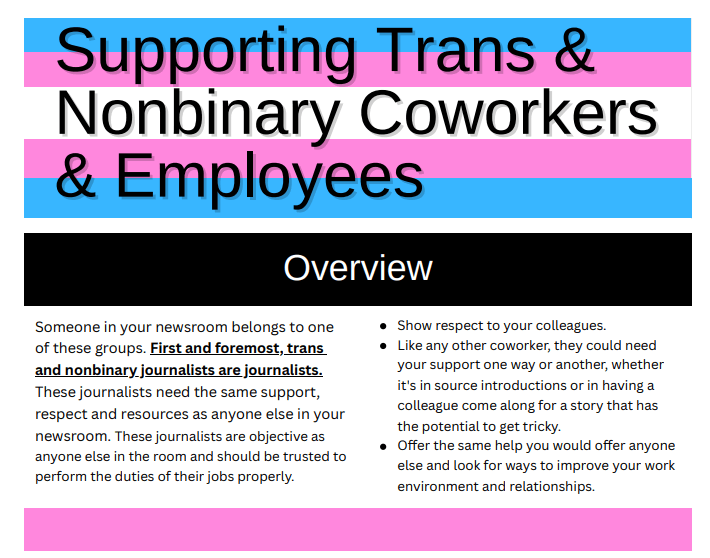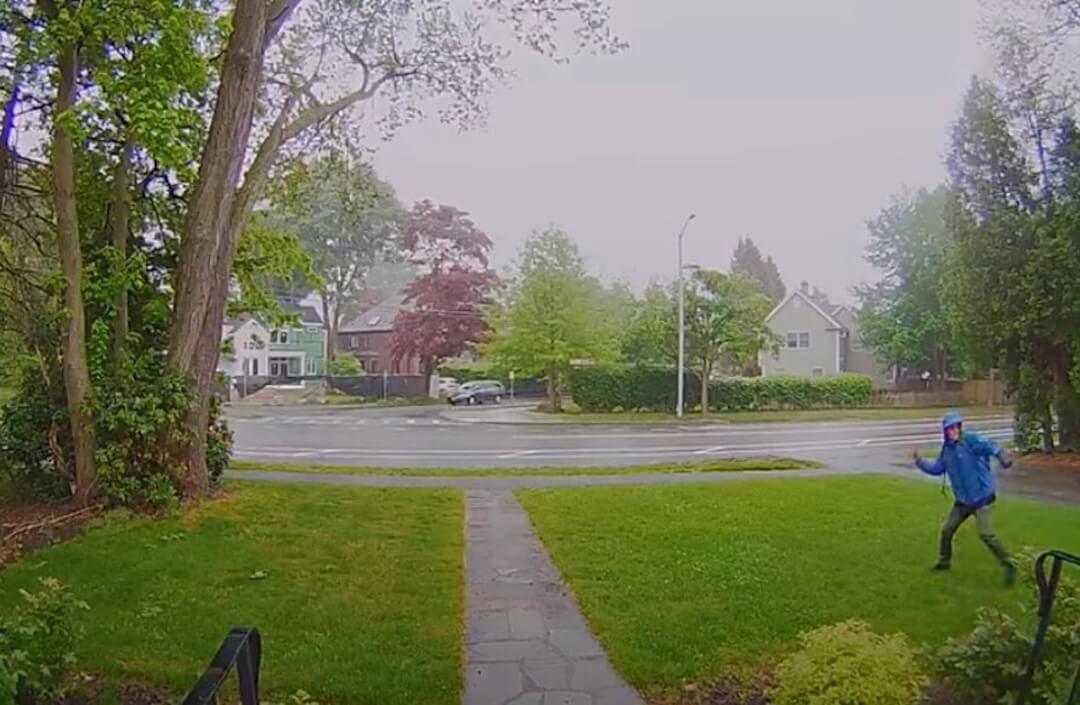The timing, unfortunately, couldn’t have been better for Alexandria Mansfield to complete a project to help trans and nonbinary journalists.
Mansfield, a reporter at The Florida Times-Union, said that like many others in the industry, she works in a state where LGBTQ+ citizens, including journalists, are seeing an increase in state laws targeting their communities.
“Being in Florida, I am definitely very aware of it,” Mansfield said. “I feel like the community is just trying to hold ground at this point and not go backwards.”
Starting last year, Mansfield began pulling together information based on feedback she was receiving from friends in other newsrooms who were transitioning. “They were telling me that they were still struggling with aspects of the transition and finding respect from their bosses and their editors, things like microaggressions,” she said.

Alexandria Mansfield, a reporter at The Florida Times-Union, created a PDF guide to supporting trans and nonbinary journalists. The flier and website were created as an innovation project for the 2022-2023 Poynter-Koch Media and Journalism Fellowship. (Courtesy: Alexandria Mansfield)
Mansfield was a fellow in the 2022-2023 Poynter-Koch Media and Journalism Fellowship. For her innovation project, she created an easily printable and email-friendly PDF guide to supporting trans and nonbinary journalists. She collected stories and edits as she went, condensing information and keeping it organized into two pages, including an overview, a list of “Who they are” and “Who they are not,” and tips for how to help with daily tasks, including using proper pronouns and keeping stories in the right context. The guide doesn’t purport to have all the answers for everyone; it includes links to established sources such as the Trans Journalists Association style guide.
The purpose of the flier was to educate staffers who may not know some of the ways to compassionately cover these communities and support trans and nonbinary coworkers and to distribute it in a way that wouldn’t put the burden on marginalized journalists to confront their peers. The goal was not to upset or single out editors and colleagues who’ve made mistakes, but to help those who are learning and who have good intentions.
To that end, Mansfield created a website at transjournalistallies.wordpress.com where anyone can download a PDF of the flier, or send it anonymously to an email address. “It’s supposed to be a reminder that can sit at their desk or on their computer.”
Friends who contributed to the guide have printed out copies of the flier and posted it in their newsrooms and sent it to others, Mansfield said. For the sake of privacy, she does not track its distribution or collect data on email addresses entered into the website. “That’s by design,” she said. Someone could, for instance, send the flier to a newsroom staff address while avoiding being identified as the person who sent the document.
The PDF format of the flier means it can easily be updated and corrected as time goes on. Mansfield said she hopes Gannett, which owns the Times-Union, will embrace the flier in other newsrooms and use its information.
Given its anonymous nature, Mansfield said it’s hard to determine whether the project is making a difference, but the feedback she’s gotten from friends and contributors has been positive.
“If they think it’s going to help at all, that’s a win for me,” she said.
This story is part of a series profiling innovation projects from the 2022-2023 Poynter-Koch Media and Journalism Fellowship. The projects were presented at a May summit in Washington, D.C.






